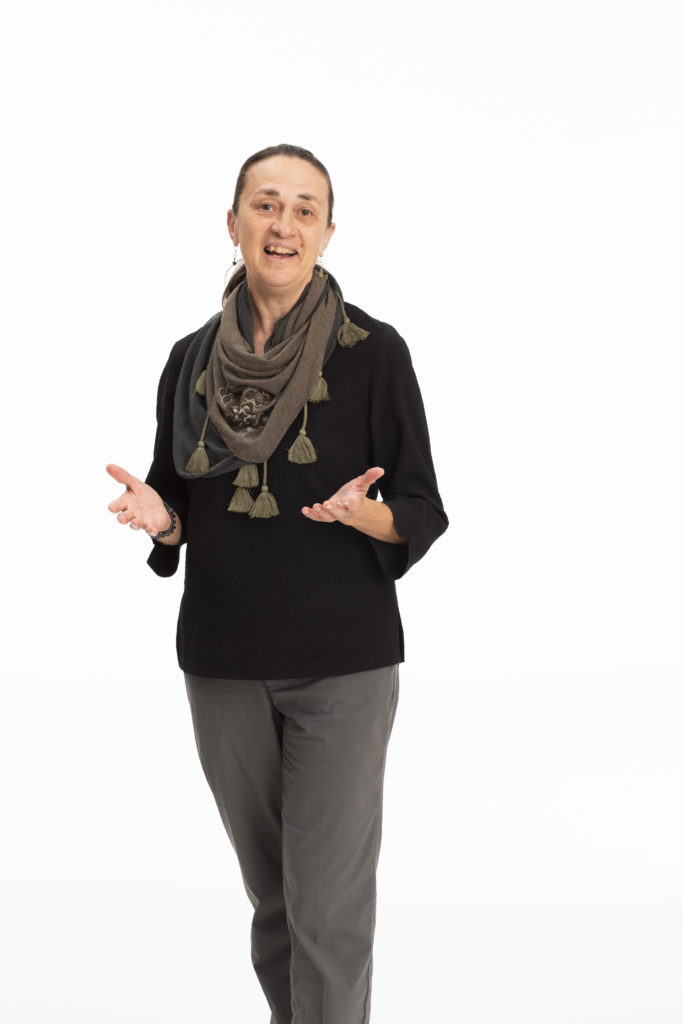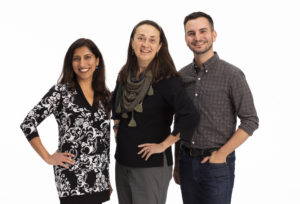Meet the Research Leaders: Kathleen Wolf, PhD
Interviewed by Maria Bertrand

Would you mind telling me about your project, especially the community-engaged research component of it?
My team members are Pooja Tandon, a pediatrician and Cary Simmons, a landscape architect. Our project is about schoolyard conversions – to explore how green schoolyards can become community parks – and we’re working in the city of Tacoma, Washington. Cary and the Trust for Public Land (TPL), our community partner, has analyzed communities all around the Puget Sound area. They’ve found that underserved neighborhoods often have a dearth of parks, and that’s the situation in our study location.
TPL promotes a policy of the 10 minute walk, the notion that everyone should be able to step out their door and be within a short walk of a green space. And that is linked to a lot of research showing physical, mental and social health benefits from experiences of nearby nature. In many communities there’s simply no land available for conversion to a park, or there may not be resources to acquire the land. How do we optimize existing green space and open spaces to serve people for that 10 minute walk?
We’re working with Tacoma Public Schools, which is also collaborating with Metro Parks Tacoma. We’re looking at how schoolyards can become a full community amenity. How can they provide the space for nature encounter, for physical activity and programs, and for community building? How can that happen 24/7 in a community?
What has been most surprising about having children as part of your project? What has come from that interaction?
Elementary school students are the designers for the new spaces at their schools, followed by a complete rebuild of the schoolyard. Our research is focusing on how children, in particular, respond to this conversion process. Connecting with kids using design is great fun, and design ideas are never-ending!
Pooja Tandon, the other scientist on our team is with Seattle Children’s Hospital. Her research interest is physical activity in children. She studies how to motivate, encourage, and understand physical activity in children. We’re envisioning a pre-post evaluation of activity before and after the participatory design, and then after the build out. We’re exploring not only the amount, but also the types of activities that happen within these spaces, and expect some interesting results.
I’m focusing on how might the schoolyard conversion enable children to see that they can be agents of change in their community. To what degree will this process help young children to envision themselves as people who can make a difference? Might these lessons stay with them — not just design, not just the schoolyard, but the process of change and how one recognizes and activates change? And will these lessons might carry through when they are adolescents and young adults?
Is a child’s understanding of themself as a change agent one of the specific aspects of your project?
Trust for Public Land is very interested in making the 10 minute walk possible, and the provision of nature in communities. The organization is also very committed to community engagement in all of its work. Cary is part of a team doing green schoolyard projects in cities across the nation, so that schoolyards can become community assets. In past projects TPL has observed that students and their families take pride in their schoolyard work and the built result. We’re also looking at academic performance, and we think that might connect to the children as they begin to see themselves as agents of change. This project, we hope, might help the Robert Wood Johnson Foundation better understand how the participatory process, expressed by place design, might influence community health immediately, and long-term.
How do you envision your project could work in the context of this pandemic?
At this point in time there is so much uncertainty about how school will happen this fall – remote, in person, or a hybrid. We are adapting as best we can, working with principals and teachers. Cary and TPL is working nationally to adapt its design curriculum. Pooja is working with colleagues to imagine new ways to measure physical activity. I would say the major complication for us is this element of space — literal, physical space. Younger people are less able to think in abstract ways. In The Trust for Public Land curriculum, children typically do measurements, use sensors (to understand sun exposure and temperature). Then they actually work on a paper that shows the entire space, and they sketch, or they move objects around to represent play equipment, a tree cluster, a community garden. Are we able to do that? We don’t know. We’re working on virtual tools; everyone is adapting.
It’s really interesting how your project is really combining all these different disciplines.
While we’re focusing on the school and a student population in the research, our commitment is that this space become valued and more usable by the entire community. We’re hoping that by engaging the children in this process, they in turn will engage people in their immediate household, their families, maybe even neighbors. We believe that providing for nature experiences can lead to a lot of community health benefits.
Was there anything else?
There are decades of studies showing that the character of your built space — the physical place of your everyday life — can influence your behaviors, your attitudes, how you engage with others. There should be more attention in the realm of community health to the role of built form, how the configuration of a space and community can influence health in a variety of ways and a variety of scales.
 Kathleen Wolf is an IRL fellow from Cohort 2019-2022 of Interdisciplinary Research Leaders (IRL). To learn more about Kathleen and Team Tacoma, WA, read about their research project: Leveraging Greener Schoolyards for Better Health.
Kathleen Wolf is an IRL fellow from Cohort 2019-2022 of Interdisciplinary Research Leaders (IRL). To learn more about Kathleen and Team Tacoma, WA, read about their research project: Leveraging Greener Schoolyards for Better Health.
Interviews conducted, transcribed and condensed by Maria Bertrand, MPH ‘21. Kathleen Wolf reviewed and approved this blog with edits in Track Changes on August 26.
The views represented in this post are those of the authors, not of Interdisciplinary Research Leaders or the Robert Wood Johnson Foundation.

